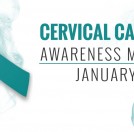What Healthcare Professionals Ought to Know About Ebola Virus?
More than 1,400 people have died from the Ebola Virus as of August 2014, mostly from West Africa as the World Health Organization (WHO) officially declares the outbreak as an international health emergency.
This week, the first confirmed British patient landed in the United Kingdom, and Donald Trump was fuming on his tweet:

Even though the Infectious Disease Society of America (IDSA) assured the public that there is zero danger to the US from Ebola, it is extremely important for healthcare professionals to know the virus, its signs and symptoms and prevention. It is best to be ready and be armed with knowledge in case the virus spreads in the US soil.
What is Ebola Virus?
Ebola is a deadly virus that first appeared in 1976 in two simultaneous outbreaks in Sudan and Congo. The latter was in a village located near the Ebola River, hence the name. There is no proven cure for Ebola. It can be transmitted to humans from wild animals and can spread through human secretions, direct contact with blood and other body fluids of those who acquired the virus.
Healthcare professionals have been usually infected while taking care of patients with confirmed Ebola Virus. The infection occurred with direct contact with patients and when no infection control had been practiced.
Signs and Symptoms
People who have acquired Ebola virus are usually characterized by sudden onset of fever, intense weakness, muscle pain, headache and sore throat. After several days, the symptoms are followed by vomiting, diarrhea, rashes, impaired liver and kidney function and in some cases, external and internal bleeding. Laboratory findings include low platelet and WBC counts and increased liver enzymes.
Below is an infographic to help you learn about the signs and symptoms of Ebola Virus:

Prevention
Because the transmission of Ebola Virus is still subject for comprehensive research and vaccines are yet to be developed, primary prevention strategies are recommended to avoid acquiring the virus.
Healthcare professionals should be able to recognize a case of Ebola and be ready to use barrier nursing strategies. They must also alert the head of the hospital or clinic for diagnostic tests and assist in shipping samples.
Barrier nursing strategies include using infection-control practices such as regular use of disinfectants and sterilization of medical tools and equipment; wearing of proper protective scrubs, lab coats, gloves, and goggles; and isolating patients with suspected Ebola contact.
The objective of these barrier nursing strategies is to prevent contact with blood or bodily fluids from the patient. In case the patient dies from Ebola infection, direct contact with the body should be prohibited.







